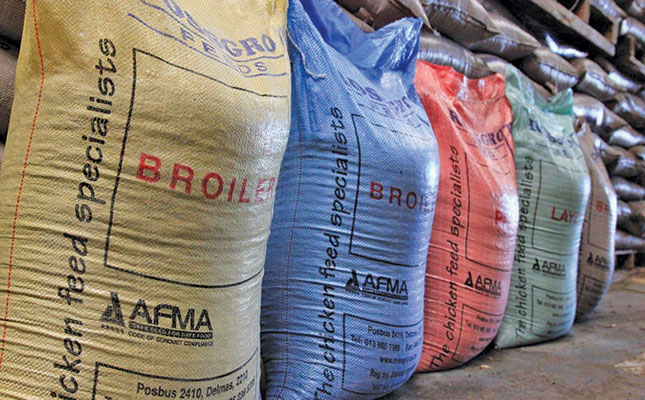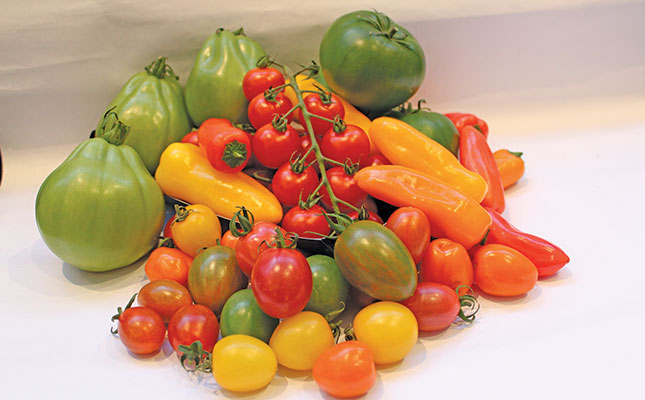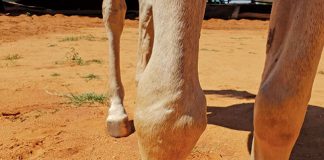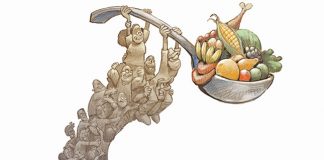
Photo: Magda du Toit
As most livestock owners know, good-quality feed contributes significantly to animals’ health and productivity. Equally, quality does not come cheap, and profit, at least in the short term, suffers. How then, does the farmer achieve a balance?
Dr Naudé Rossouw, director at Mpumalanga-based Rossgro Feeds, explains that the main contributors to the cost of animal feed are research costs, ingredients, transport of raw materials and processed feeds, equipment, labour, and the feed conversion rate of the animal.
He advises farmers not to focus simply on the cost of quality feed, but rather on what they will lose if they buy substandard feed.
“Farmers may not realise it, but a portion of their feed cost [pays for] research. A great deal of research is needed to formulate the best feed and determine the optimal nutrient absorption rate for the [specific] needs of each animal category. Research is critical to guarantee that animals are provided with scientifically formulated feed products so that they can achieve peak performance and health,” he says.
When buying a load or bag of feed, farmers also receive the expertise and knowledge of animal nutritionists. “Most animal feed mills have animal nutrition experts who can provide advice about the requirements of animals, and they are often very willing to share this expertise with farmers.”
As mentioned, another contributor to the cost of the feed is the ingredients. As prices for crops such as maize, soya bean, oats, and wheat increase, so does the price of feed, as feed mills buy the grain on the open market on the JSE. All the other additives also contribute to the total cost of the product.
At the mercy of many factors
De Wet Boshoff, executive director of the Animal Feed Manufacturers’ Association (AFMA), stresses that certain fundamentals should be understood when considering the cost of compound feed.
“First, in any ton of feed manufactured, raw feed material cost accounts for 75% to 85% of the total product cost, depending on the type of feed.
“Second, the pricing of South African grains and oilseeds is a function of the Chicago Board of Trade (CBOT) prices, the exchange rate (all international commodity trade takes place in US dollars), premiums, and supply and demand of the commodity locally.
“Thus, should South Africa produce surpluses to supply the local market and export the balance of the commodity, the JSE price will reflect that by trading close to or even below the export parity price.”
Boshoff adds that additional influences such as the COVID-19 pandemic, outbreaks of African swine fever, avian influenza or other diseases, international weather conditions and supply constraints can add volatility to global commodity markets and influence the CBOT price.
“Russia’s invasion of Ukraine, for example, has had a severe impact, as seen on the current markets.
“This is due to the strategic importance of grain and oilseed supply from Ukraine via the Black Sea region on the one side and natural gas and oils from Russia to Europe and elsewhere on the other.
“International commodity prices moved sideways from 2016 to 2019, then increased dramatically as a result of the factors mentioned above.”
Boshoff adds that it was fortunate for South African poultry and livestock producers that commodity prices for maize and soya bean remained close to export parity pricing for most of this period due to substantial local surpluses.
“Should South Africa have been a net importer of maize and soya bean, local feed prices would have been at dramatically higher price levels.”
Apart from the cost of raw material as determined by the free market, administered costs out of the control of the feed miller add to the final price of feed.
“Two good examples of administered costs are energy (fuel, gas and electricity) and load-shedding. The latter results not only in lost production time, but additional labour costs and downtime when the mill has to be cleaned due to power loss during mixing.”
Rossouw points out that labour costs contribute substantially to the price of a product. This is especially the case with the larger feed mills, who employ skilled staff such as animal nutritionists, veterinarians, agricultural economists and engineers.
Transport and logistics also form a major part of the farm-gate feed price. This has been particularly so recently, with escalating fuel prices becoming an ever-more important factor. Farmers can mitigate this by ensuring that they buy from mills as close to their farms as possible.
Another reason for the high cost of transport and logistics is that safety standards have to be observed when transporting raw materials and ingredients to the mills. AFMA has a transport protocol that provides guidelines and cleaning regimes in this regard.
Comparing quality and price
To ensure that they choose the best available feed option, farmers should do their homework, advises Boshoff. They should compare suppliers not only on price, but also on quality and the performance of animals.
“In many cases, it has been found that slightly more expensive feed gives a better return on performance due to the specifications and quality of the feed. However, it’s not a case of one-size-fits-all; the producer must decide on his or her needs and accordingly source the best quality for the best-priced feed.”
Rossouw explains that when comparing prices between feeds, the farmer should calculate the cost per head of livestock per day, and not only the cost per bag.
“Although it’s prudent to compare prices between different feed suppliers, it’s important to compare apples with apples. Bags can weigh the same, but the contents may differ significantly.”
He adds that larger mills can negotiate better grain prices, as they buy in bulk.
Quality control at every point
According to Boshoff, quality management plays a crucial role within the context of compliance amongst AFMA members.
“Quality management doesn’t only apply to the quality of the final product to the customer or producer; it entails quality control throughout the manufacturing process. This starts with analysis of all raw materials received at an AFMA member’s plant, followed by a protocol of continual monitoring and management throughout the production process up to the finished product.”
He adds that a quality-control laboratory plays a significant role in ensuring that these requirements are met, and no less important is a qualified and registered animal nutritionist.
The feed mill and factory at Rossgro has its own laboratory to ensure that the quality of raw materials received and finished goods dispatched meet the necessary requirements. Certain crops are more prone than others to mycotoxins and this risk is managed by sending samples to an external laboratory.
“At Rossgro, we test the raw material on arrival for protein content and moisture.
“Variability in the feed ingredients we buy is unavoidable. Differences in climate, soil, plant genetics, fertiliser use, transport and storage mean that deliveries from various suppliers, or even from the same supplier on different days, can differ substantially with regard to nutrients and nutrient levels. We have integrated quality and safety systems in place to ensure a consistent output of high-quality products. After production, we test again before we deliver the final product to our customers,” says Rossouw.
Most mills use a near-infrared spectroscopy (NIRS) system for quality control and accurate measurement of key nutritional components, such as essential amino acids, in feed ingredients as they arrive at the feed mill, as well as in the finished products.
The system makes use of the naturally occurring electromagnetic wavelengths between 700nm and 2 500nm. It is an accurate and rapid analytical technique that is well suited to quantitative determination of the major constituents in most types of food and agricultural products.
To further ensure quality, Rossgro conducts chemical tests to determine nutrient and moisture content, and sifts the material to remove foreign objects such as insects and weed seeds.
Quality of feed is closely tied to food safety in the value chain. The presence of pesticides, mycotoxins or moisture in the feed can affect feed product quality and may also present a risk to human health. In addition, foodborne pathogens such as Escherichia coli, Salmonella and Campylobacter can enter the human food chain through livestock feed.
production stages
At Rossgro, the feed mill comprises a raw material storage area and a medication, vitamin and mineral storage room. The main factory is equipped with raw material pre-proportioning bins, mixers, fat coaters, pellet presses, grumblers and final product storage bins. Some of the final product is bagged before being transferred to trucks for transportation to clients.
Raw materials include maize, soya bean, sunflower, limestone, wheat and bran.
Enzymes, medication and minerals are also added to the rations as prescribed by the nutritionists and/or farmers’ veterinarians.
The production process of animal feed can be divided into several stages. Most mills are automated and equipped to manufacture a wide variety of feeds according to the needs of animals or the requirements of individual clients.
Stage 1: Ordering and purchasing
The raw ingredients are purchased according to various feed formulae. Popular ingredients across the board include maize, soya bean, wheat, bran and oats.
“We fix the prices of the raw material three months in advance. We transport it to the mill after buying it and keep at least one month’s physical material in stock. Although this affects our cash flow, it ensures that we always have enough material to process and can supply feed even if there’s a shortage of raw materials,” says Rossouw.
Stage 2: Receiving and testing
Three processes are carried out initially: receiving, testing and cleaning the raw ingredients. The tests determine the raw materials’ nutrient content.
Stage 3: Feed formulation
Nutritionists devise a feed or dietary formula to ensure normal metabolism and optimal growth in farmers’ animals. “Feed formulation and manufacturing is a complex process. It’s essential to consider the nutrient requirements of the animals and this is where the knowledge and expertise of the animal nutritionist come into play,” says Rossouw.
As a percentage of feed is excreted back into the environment by animals after having been consumed, a high-quality, balanced diet also helps to ensure that these excreted nutrients don’t have a detrimental effect on the environment.
Linear programming is an easy and simple method of formulating the different feed batches. After the various feed formulae have been determined, the information is entered into a computer and the various batches mixed according to the information fed into the program.
A well-formulated and balanced diet not only ensures optimal growth and production of the poultry or livestock, but also builds up animals’ immune systems and reduces the risk of them contracting diseases.
Stage 4: Mixing and processing
The raw material is crushed into powder by a feed hammer mill and mixed with proteins, vitamins and minerals according to the formula. Depending on the size of the mixing unit, lots of up to 3t can be processed.
After processing, the batches are either sold in bulk or bagged. The feed can also be processed into pellets using heat, moisture and pressure. The powder is mixed with steam and through a process of gelatinisation, the intermolecular bonds of the starch and protein molecules are broken down. After the pellets are formed, they are cooled and dried before bagging.
Compared with unprocessed grains, pelleted feeds are uniform and often easier to digest. The pellets can also be coated with additional oil. This so-called fat coating is carried out after pelletisation to increase the oil ration in the feed without influencing the pellets’ solidity.
The feed is sold as a registered product and the manufacturer allocates a V-number to each batch of farm feed for traceability or recall purposes. The content is also described on the product label on the bag.
It is possible to manufacture custom feed mixes for customers, but these may only be sold to the particular customer and not on the general retail market.
Stage 5: Packaging
Feed is normally sold in 40kg or 50kg bags or in bulk. The bags are made from biodegradable polypropylene material.
Quality control
Quality control is essential during all of the manufacturing and processing stages. “At Rossgro, we take three samples of the final batches. One is sent with the final product to the customer and the other two are held in cold storage for future reference and traceability. I cannot emphasise enough the [importance of maintaining quality in] animal feed, and the only way to ensure that we deliver quality feed on-farm is to monitor the entire process constantly,” says Rossouw.
Email Rossgro Feeds at [email protected], or [email protected]. Email De Wet Boshoff, executive director of AFMA, at [email protected].










